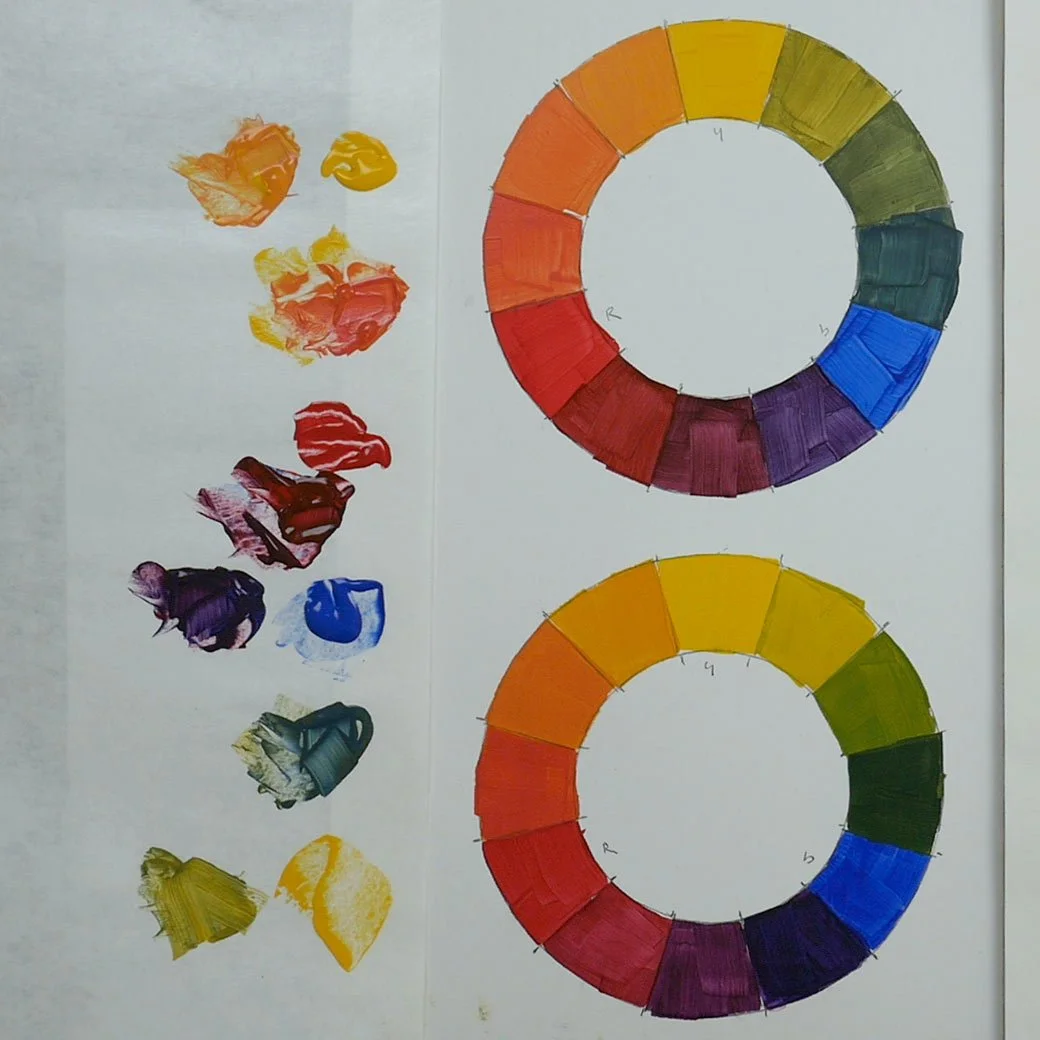How to Mute a Color with Todd M. Casey
You’re in the middle of a painting, you squeeze out some pigment and you realize that, oh no, the color is way too bright for what you need.
If you're in this situation, Ep.81 guest Todd M. Casey says it’s time to pull out your color wheel.
(image from Kelly Anne Powers’ studio)
To understand how your color wheel is going to help you solve your saturation problem, first you need to understand the wheel itself.
A color wheel is made of up three types of colors.
First, you have your primaries set in an equilateral triangle: red, yellow, and blue.
Between each primary sits a secondary and are the result of mixing the two primaries. Secondaries include orange, green, and purple.
Then finally, you have your tertiaries. This shows how each of those secondaries lean. One orange, for example, will sit closer to yellow while the other will sit closer to red.
Put it to Practice:
Knowing color wheel geography is going to help you when it comes to mixing muted down colors.
And it’s because of something called complements. You can gray colors down with actual gray paint… or you can use a color’s complement. That’s the color that sits across from the color on the color wheel.
Compliments include:
Red and green
Yellow and purple
Blue and orange
But remember there are 12 spots on the color wheel. Which red is across from which green?
If you want to get a sense of what YOUR pigments can do, you can make your own color wheel.
Great question! Pull out your color wheel and find out. Your color wheel might not have EXACTLY the color of your paint tube, but you can get pretty close.
Now look across and see what color sits opposite of it. Try adding a bit of that color into your mix and you’ll find that it grays it down.
This is an effective and easy way to knock a color back when you want it to be just a little less saturated


